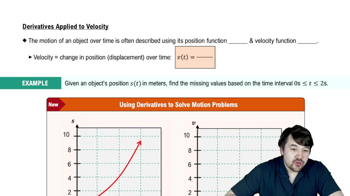Use the graph of f in the figure to evaluate the function or analyze the limit. <IMAGE>
lim x→−1 f(x)
 Verified step by step guidance
Verified step by step guidance Verified video answer for a similar problem:
Verified video answer for a similar problem:



 6:47m
6:47mMaster Finding Limits Numerically and Graphically with a bite sized video explanation from Patrick
Start learning